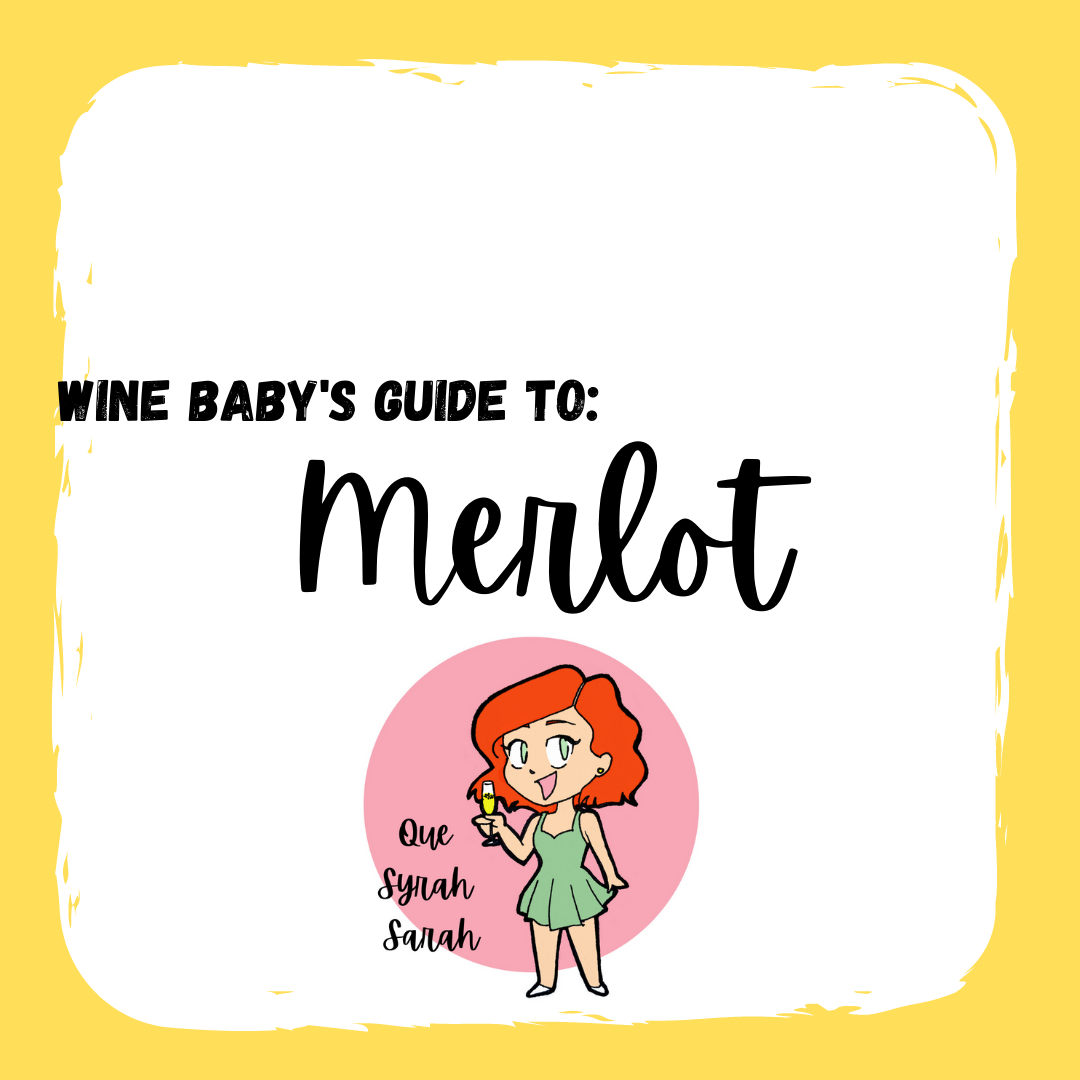
Wine Baby’s Guide to: Merlot
After the iconic line “I’m not drinking any more f*ing Merlot!” in the movie Sideways, poor Merlot’s reputation took a bit of a beating.
It’s often compared to Cabernet Sauvignon, which it is similar to in taste and texture. But it’s not really a fair fight when we compare run of the mill Merlots with high end Cab Sauvs, now is it?
It’s easier to find less expensive, poorer quality Merlot, because it’s much easier to grow than Cabernet Sauvignon, and tolerates a wider range of climate.
Admittedly, Merlot is not my favourite. The cherry notes always seem to strike me as somewhat medicinal. I definitely prefer it in a blend, or as a rosé, but I am on the hunt to find some single varietal Merlots that change my mind. Got any suggestions?
TASTING MERLOT
Although similar to Cabernet Sauvignon, there are a few key differences to look out for in a blind tasting. Merlot is typically a bit softer, fruitier, and lacking in the tell-tale “green” notes that Cab Sauv carries.
Because they are so similar, they also blend well, and this duo gets partnered up all the time. But keep your eye out for a single varietal bottle to taste while looking at these notes, so you can really get to know it better.
Colour
Merlot is most often done in a medium-bodied style, and this is mirrored in it’s medium intensity ruby hue.
If it’s blended with a Cab, or has been made in a bigger, bolder style with more oak, it will appear darker in intensity.
And as always, with age, we may start to move towards a more tawny colouring.
Nose
Merlot is a very fruit-forward red, with pronounced notes of both red and black fruit.
I find that lighter Merlots tend to lean more towards the red fruits, like cherries, strawberries and red plum, whereas fully bodied versions dip into darker fruits like blackberry, black plum, and black currant.
You may also find other notes, such as chocolate, dried herbs, and licorice.
Merlot is commonly matured in oak, which brings out vanilla flavours, but not always.
And if your Merlot is age-worthy, those fresh fruit flavours will become dried, and the oak will give more of a tobacco note.
Palate
Merlot runs very “middle of the road” when we describe the components that make up it’s body, which ranges from medium to full.
Medium tannins, medium acidity, medium alcohol, and dry.
Of course, this can be manipulated by incorporating the use of oak, or by adding it to a blend.
Not a fan of tannic red wines, but want to try something a little less delicate than a Pinot Noir? Maybe this is the right direction to go in.

PAIRING MERLOT
Because Merlot isn’t too bold, or too light, it’s a very versatile wine to pair with. Pork with roasted veggies would be a great simple dish.
Or pizza!
SHOPPING FOR MERLOT
Because Merlot vines are less temperamental that Cabernet Sauvignon, they can ripen fully in a wider range of climates, and is commonly grown all over the world.
The best of the best Merlot is grown in France, specifically on the right bank of the Gironde, in Bordeaux. Merlot is the most widely planted grape in this region.
Many of these wines are blends, partnering it with Cabernet Sauvignon, Cabernet Franc, Malbec, and/or Petit Verdot. But that’s not to say you can’t find any single varietal options.
The most notable places to check out are St. Emilion, and Pomerol.
In fact, one of the most expensive wines in the world is a 99% Merlot from Pomerol: Chateau Petrus.
The South of France also has a large planting of Merlot. These wines can be single varietal, or blended with Cabernet Sauvignon, Grenache, and/or Syrah.
The USA is the next best place to look. Check out both Washington State and California, specifically Napa and Sonoma. (hint: the more specific the location is on the label, the better quality the wine is typically)
Other places to check out include Chile (Central Valley), South Africa (Stellenbosch), Australia (Margaret River), and New Zealand (Hawke’s Bay).
Need recommendations? Check these out:






-
-
3 years
Tagged asti method, cava, champagne, lambrusco, methode traditionelle